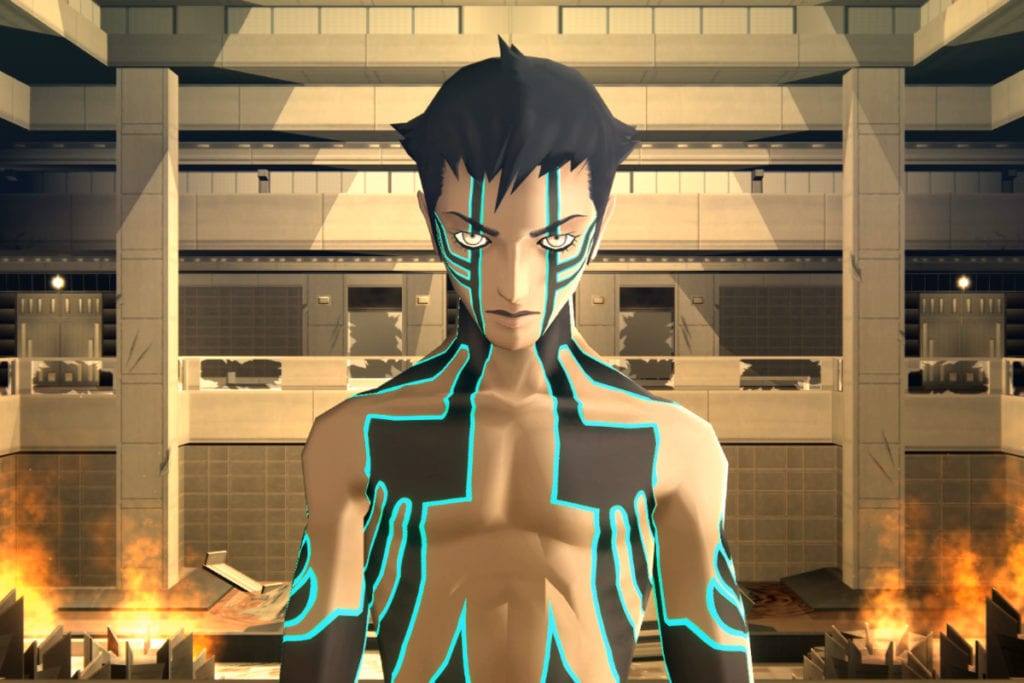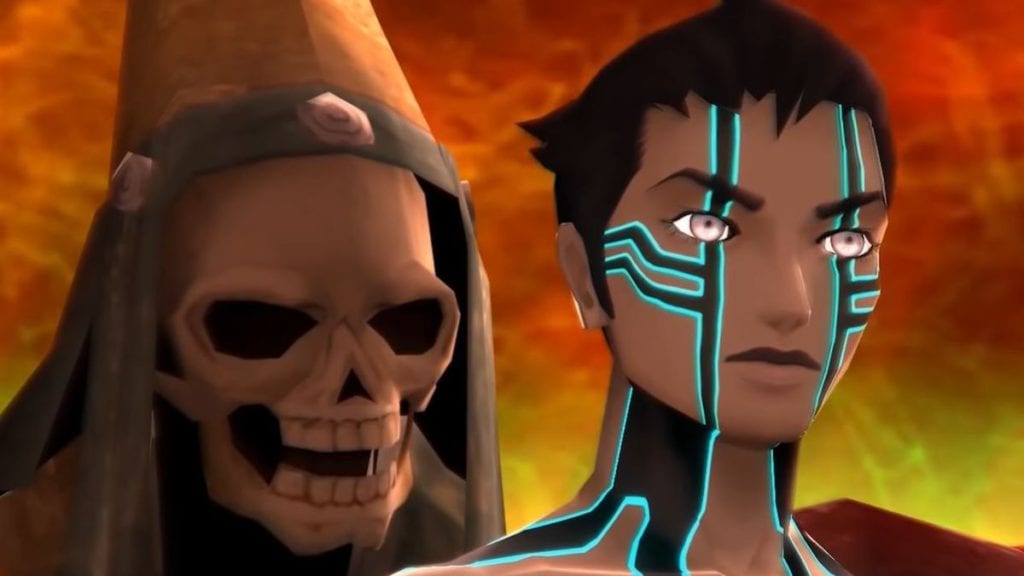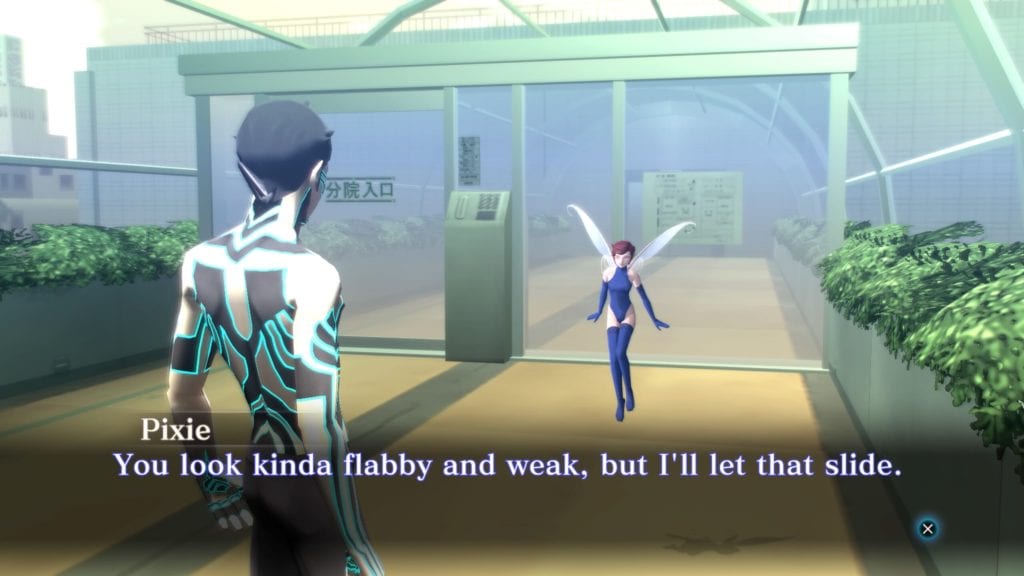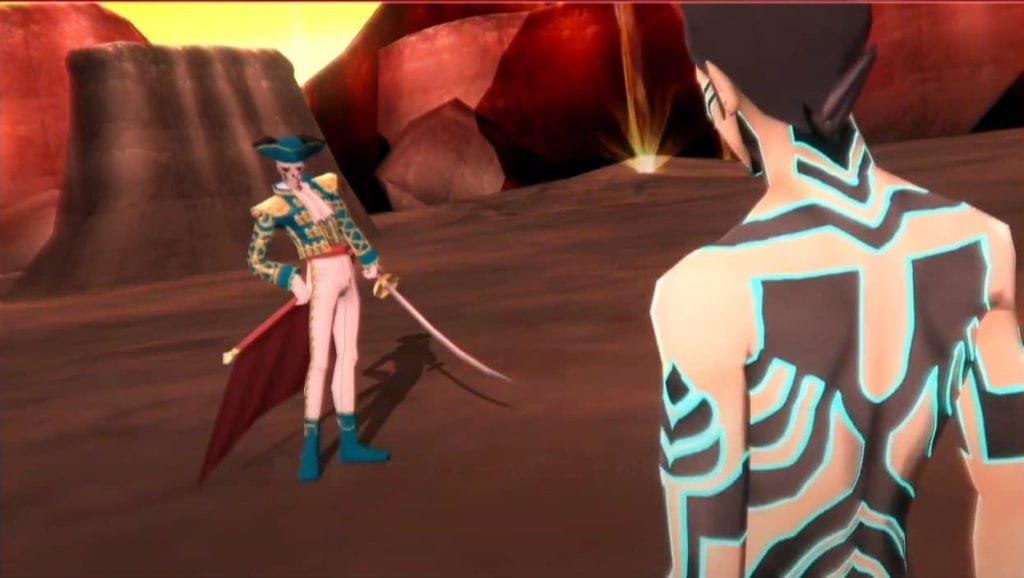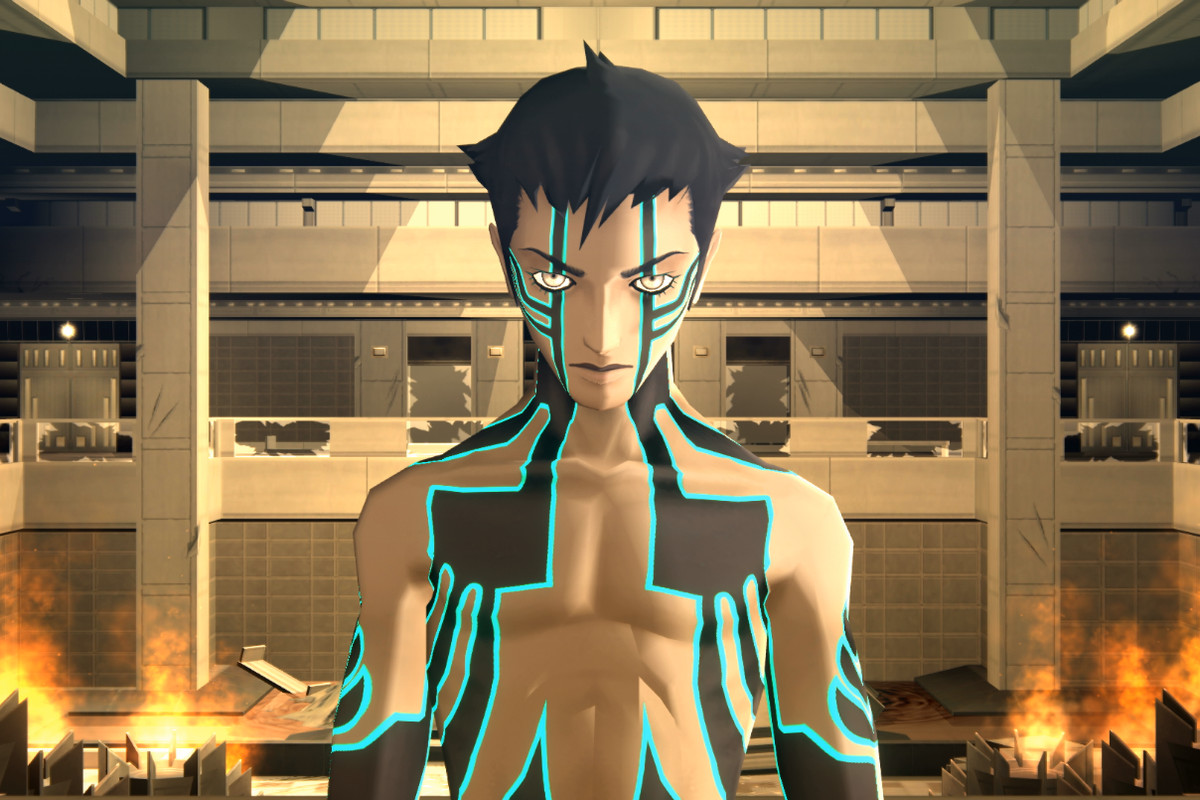Shin Megami Tensei III: Nocturne is a game I would have been enamored with upon its original release. In 2004, I was a gamer who bounced between getting lost in sprawling fantasy worlds and defeating enemies in turn-based battles in Final Fantasy and screaming until my throat was raw at psychological horror games like Resident Evil and Silent Hill. Nocturne does a great job at blending traditional JRPG elements like a leveling system, turn-based comment, and creature capturing with it’s eerie, post-apocalyptic setting. While the HD remaster adds some polish and the turn-based gameplay and story are still solid, there are still a few archaic gameplay elements that keep it from shining in the landscape of games in 2021. Despite that, if you’re into JRPGs, it’s worth your time.
Shin Megami Tensei III: Nocturne released in the United States in 2004 from developer Atlus to overall good reviews. Since then it’s been somewhat of a cult favorite. It follows the silent protagonist in Tokyo following a cataclysmic event called The Conception. The world is stuck in an endless loop of life and death and only those who were in the hospital where the game begins survive this apocalyptic event. At the beginning, the hero becomes a Demi-Fiend (half human, half demon), and the humans who remain in the world are left to decide its fate. Unfortunately, the Demi-Fiend is not allowed to be part of this influence. Since he exists in both realms, as human and demon, he has the potential to hold power and influence over both worlds. Throughout the game, you’re able to influence the world and make decisions that can alter it and the game’s eventual endings (there are several which lend to more replayability).
The hero traverses the world (Tokyo) as a pin on the world map and meets a variety of warring factions. The world map portions of the game are uninspiring, but thankfully you don’t spend too much time there. The story is eerie and while sometimes hard to follow, it works. I found myself rooting for some groups like the Manikins and detesting others. The HD remaster employs voice-acting, and for the most part it’s really quite good. My only annoyances with it are minor, like with chatty shopkeepers and when you’re fusing demons. Outside of the game’s main players, there are many NPCs, but most of them don’t say much. I often felt like they exist solely to feed the player information on where to go next. Occasionally something meaningful was said, but I often wished there would have been more world building through them.
While Nocturne never reached the popularity the Persona series has experienced in the last few years, the Shin Megami Tensei series shares a lot with its sibling series. Both games feature turn-based gameplay with recruited creatures who have a set of moves based on a specific element and both feature the ability to fuse together the creatures to form more powerful ones. This is where Nocturne shines brightest. While it doesn’t have as many bells and whistles as newer Atlus games like Persona 5, it is apparent that much inspiration in Atlus’s current games come from their past.
You randomly encounter enemies on the field and battle with a party of the main character and three demons. You are able to exploit an enemy’s weakness using elemental spells that use SP or physical based attacks that spend HP. When you land a critical hit or exploit an enemy’s weakness, your party gains an extra turn. On the flip side, if an enemy dodges, absorbs, or blocks an attack, you lose the rest of your turns. If your only foray into an Atlus game is a Persona game, you’ll feel right at home. It isn’t particularly ground-breaking, but it is fun and addicting.
One of the frustrations I had was that the game didn’t let you know what an enemy’s weakness was once it had been exploited. It was a worthwhile addition in the newer Persona games that I sorely missed here. With some of the other quality of life changes the HD Remaster included, I hoped that would have made it in, too.
When building your party, you’re able to recruit demons mostly by talking to them and offering them money, items, and answering questions. Again, if you’re a fan of the Persona games this should feel somewhat familiar. You’re also able to fuse demons and create new ones. Many of the demons will look familiar, as most have shown up in other Persona or Shin Megami Tensei games. In the original Nocturne, skills transferred over randomly when fusing. Thankfully in the remaster, you’re able to select the skills that will carry over which is a welcome change.
Unfortunately, once you’re wanting to manage your party, view skills, and see a demon’s stats, things become a little convoluted. In the menu, you use the party command to select what demons will be in your party. You’re unable to view their skills here. Instead you must select skills. Frustratingly, there you’re unable to view stats. That’s under a separate command, where you can see your skills but not what they do. When building your party you’ll do a lot of swapping based on what type of enemies you’re facing while also jumping around the menu a lot. It initially is tiresome, and would be better if it could have been streamlined where all the information and options are available in one place, but you do get used to it. Regardless, battling is still a lot of fun, and in some parts of the game there are several boss battles within a short period of time, and it’s helpful to be strategic with your party members.
Dungeon-crawling is usually a long trek, and I found myself needing to warp back from a save-point to use the healer to restore my SP somewhat often and then rerouting back to where I was in the dungeon. This allowed for a bit of level-grinding on occasion, which at times, was needed, and thankfully the battling is fun, though it can get a little repetitive. Like many JRPGs from the time period, Nocturne can be unforgiving with its difficulty at times. If the main character dies, it’s game over, and I died a few times on normal encounters. Thankfully, there are a lot of ways to customize your character using magatamas, a parasitic entity that imbues you with different attacks, spells, and resistances.
The game also doesn’t always do a great job at letting you know where to go – adding another layer to the difficulty. Oftentimes you’ll need to speak with NPCs who will let you know where to go. Halfway through the game, I used a guide to look something up, and I found myself continuing to use the guide because it made things a lot easier.
Finally, there are several noteworthy differences between the two games. Graphically, the game looks good. Things are more crisp and clearer than the 2003 game. Cut-scenes didn’t get much in the way of an upgrade, and when they play, they’re in the original 4:3 aspect ratio with blurred borders. It can be very jarring when the game transitions between the two. There is also an easy mode called Merciful you can play on if you’re having trouble. If you continue to have trouble, there is paid DLC that adds two game areas that let you farm money and experience items. Atlus also added a suspend option as well so you can save and pause your game anywhere if you’re in between save points, and it can be very handy in longer dungeons. There is also the addition of the character Raidou who previously had only been seen in the 2008 Japanese release called the Maniax Chronicle edition. When the game came out in the West, gamers were treated to the addition of Dante from Devil May Cry as a character they encountered. If you’re still wanting Dante in the story, there is paid DLC.
Despite a few bumpy features and frustrations, Nocturne is a game that still plays great almost twenty years later. With the addition of voice acting, remastered graphics, and its quality of life changes, it cements itself as a JRPG experience that is still worthwhile even if battles can sometimes be difficult and repetitive.



